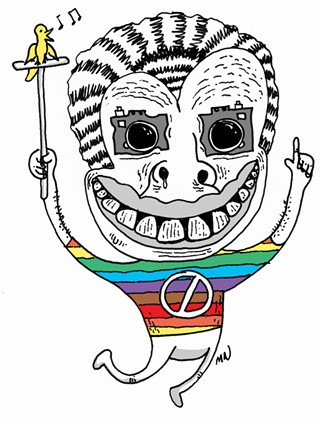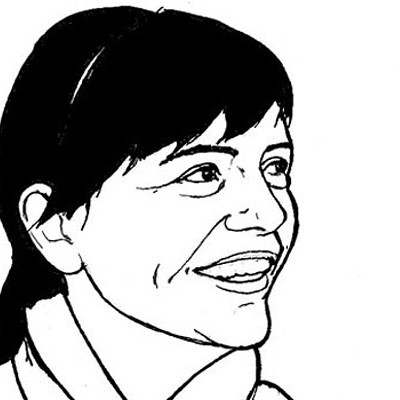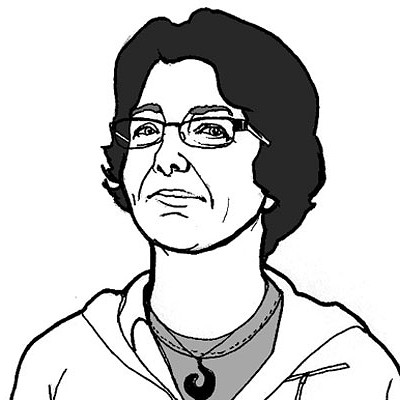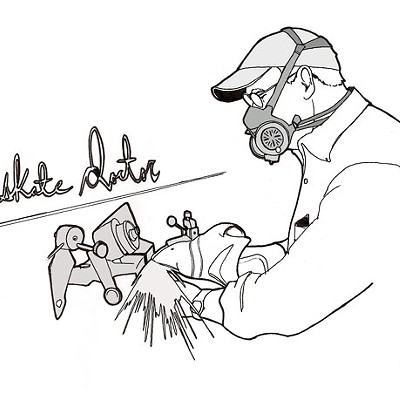Susan Earle is sad.
"Soon," she says, "we're going to be Hopeless."
And no, she's not on about the economy.
Earle is talking about the Hope Colour Processor in the Photography department at the Nova Scotia College of Art and Design University. The 10-year-old $30,000 beast that's leaving the university at the end of this semester for its future life as...as...as... "Anyone want a nice planter? Actually, I don't know that you would want to put anything in it," the photo technician says, "because after the chemicals it is so toxic and gross. It will probably be scrap metal."
And now maybe you're sad too, bearing witness to the demise of yet another machine of the past---in this case, Earle thinks, the last traditional colour processor in the Atlantic provinces---done in by digital.
The Hope Colour Processor---four feet high and, Earle says, with just a sliver of irony, "the size of two small coffins side by side"---takes with it to the grave NSCAD's basic colour photography class, which won't be offered again. The colour section of the Photo department---which houses the Hope and seven walk-in-closet-sized colour darkrooms---is getting knocked down for classroom space.
The Hope's replacement? Ink-jet.
Instead of loading the processor in pitch black and waiting four minutes for the industrial behemoth to spill out a test-strip (which is what student Erin MacDonald does with a shot of Peru's Machu Picchu while I'm watching: "You find the right density," says MacDonald, pointing at her just-cooked image, "and then you print one at the right density, and then print a bigger one to see your colour balance and see what changes you have to make, and then you would do another one and..."), now the magic will only happen on a computer.
"You'll do your Photoshop thing and spit it out," says Earle.
Don't take her flippancy for disgust---Earle isn't mourning the disappearance of machine colour processing at NSCAD for the reason you probably think.
The 40-year-old admits nostalgia is driving her emotions: "I would like to think there's still a quality to a print that has silver in it that there isn't with an ink-jet print."
But this isn't like whining and pining for the sound of turntables over a Bose iPod dock. Earle isn't a blind purist and this isn't about a supposedly superior (or inferior) end-product.
"I hate to say it but I would challenge anybody to put something out of [the processor] and an ink-jet print side by side and say one is better or worse."
Yes. That's right. She just said it. You can't tell the difference. She's loathe to admit it. But she's being honest and she's said it nonetheless.
"It's hard to justify keeping this expensive dinosaur running when you can go into the computer lab and not suck in all these chemicals and get something that looks just as good."
Or better.
You can't get a good print from a bad negative with machine processing. But scan the negative into a computer and manipulate it "and you'll probably get something half decent," Earle says.
Plus, parts for the Hope are a bitch to find and the chemicals are deadly toxic (not that you'd want to gnaw on an ink-jet cartridge either).
But there is one piece of this death worth your bereavement.
With ink-jet printing, Earle says, students are "interacting with a computer, but not interacting with other people so much."
With the Hope, it's different; it's more of a "communal" thing.
"People put their prints in there," Earle says. "They come out. They talk for four minutes. They bounce their ideas around." They pull out their test strips. And whoever happens to be around contributes to the process. They go back in the darkroom and do it again.
"On the computer, people have a tendency to keep it to themselves until the final thing comes out and then they stick it up in the classroom."
Earle calls it not better or worse, but "a different way of working."
"It's like when horse-drawn carriages were replaced by cars. It's not that all of a sudden it was better. It was that you got there in a different way and it was faster. And you had problems in a different sense to deal with. You didn't have to shovel poop anymore, but you had to put gas in the car."
Earle manages a cheerless smile. "It's sentimental," she says. "I'm nostalgic."
Send an 8x10 glossy to Lezlie Lowe at [email protected].
















